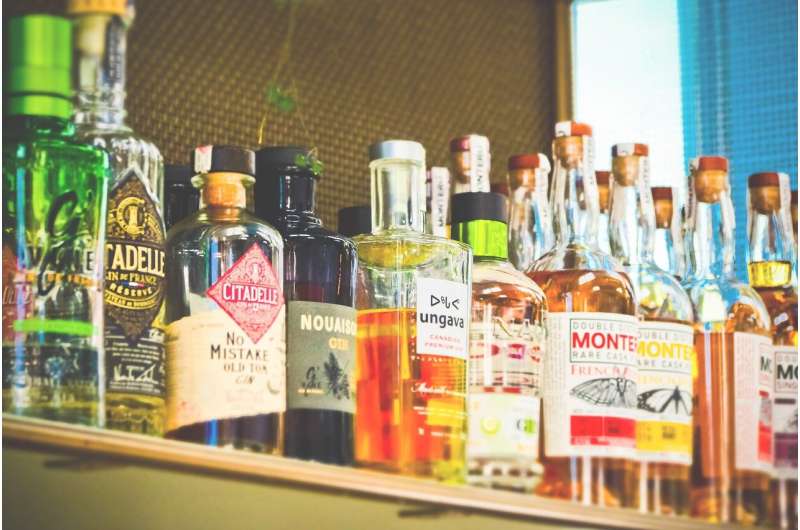
Early in the pandemic, adults in the United States were drinking more alcohol to cope with the stress of it all, researchers found.
More than a year later, those early spikes in alcohol remained consistent through 2020—and in some cases, soared even higher.
That’s according to a new study by RTI International, a nonprofit research institution in North Carolina’s Research Triangle Park. It’s a continuation of a study RTI conducted last year as the country shut down to curb the spread of the coronavirus.
The first study found parents, women, unemployed people, people of color and adults with mental health concerns increased their alcohol consumption between February and April, The News & Observer reported at the time.
The new RTI study released last week found the increases continued through November.
“People didn’t just increase their alcohol consumption for a month or two at the beginning of the pandemic—the trend held for nearly the entire year,” said Carolina Barbosa, a health economist at RTI, in a statement accompanying the study.
Barbosa added that large-scale, anxiety-inducing events like natural disasters have been associated with increased drinking habits in the past.
“A pandemic certainly fits that description,” she said.
RTI surveyed nearly 1,000 people last year from a nationally representative sample. The follow-up study was conducted by re-surveying the initial participants.
In June 2020, liquor sales had surged 21% compared to the same month in 2019, The N&O reported. In November, that figure had dropped to just 5.6% more sales than in November of 2019, according to data from the N.C. ABC Commission.
July of 2021 saw a 13.7% in sales from July 2020, according to the latest data.
By November, alcohol consumption was 39% higher than it had been in February of 2020, RTI said. That’s slightly up from the 36% increase of the first study, which looked at discrepancies in drinking habits between February and April of 2020.
The National Institute on Alcohol Abuse and Alcoholism, which sponsored the RTI study, recommends men consume no more than four alcoholic drinks per day and 14 per week. For women, those recommendations drop to three per day and seven per week.
These were the guidelines that RTI used to define excessive drinking in the study. Binge drinking was defined as when a man consumes more than four drinks in two hours, or when a woman consumes more than three in two hours.
The proportion of people drinking excessively increased by 27% between February and April of 2020. That figure jumped to 39% by November. Binge drinking, which had risen by 26% as of April 2020, had reached a 30% increase by number.
The study found more women exceeded alcohol guidelines than men in the months between April and November.
In the release, Barbosa said women “are more likely to use alcohol to cope with stress, depression and anxiety.”
“Alcohol consumption among women has been on the uptick for past two decades, and our study suggests the pandemic may only exacerbate that trend,” she said.
The largest increases in alcohol consumption were among Black and Hispanic women, Black men, non-Hispanic men who did not identify as Black or white, and women with children younger than five years old, according to the study.
Between February and November, Black men and women saw increases of 173%. Hispanic women saw an increase of 148%. Men who selected a race and ethnicity other than white, Black or Hispanic saw an increase of 209%, while women with young children saw the largest increase, rising by 323%.
For Black people exceeding drinking guidelines, an increase of 140% by April had jumped to six times the initial number by November.
Katherine Karriker-Jaffe, a co-author of the study, said the increases may have been caused by the “overall social context of the last year, which included demonstrations against racial injustice and a tense political climate in the lead-up to the election.”
“Additionally, a higher proportion of Black people have been working essential jobs and live in areas with lower access to services,” she said.
But Karriker-Jaffe added that more research is needed to understand the different factors that led to these results.
The percentage of people with mental health issues who reported drinking to cope with stress shot from 5% in February to 15% in November.
Barbosa said in the release that relaxed pandemic regulations, like allowing curbside pick-up and home deliveries, may have contributed to the increases.
“Policymakers should be prepared to respond to the public health consequences of such a sudden, sustained increase in alcohol consumption,” she said.
Excessive alcohol use causes more than 95,000 deaths in the U.S. each year, according to the Centers for Disease Control and Prevention. That’s about 261 deaths each day.
A leading cause of preventable death, the CDC says it shortens of the lives of those who die by nearly 29 years on average.
Source: Read Full Article
